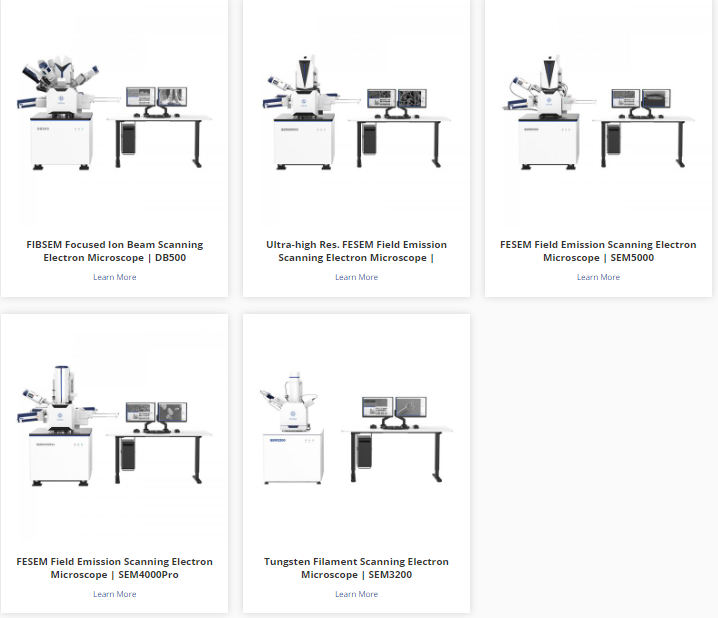The Scanning Electron Microscope (SEM) is a powerful tool for various applications in material sciences, life sciences, and other fields. Different kinds of detectors have been developed to obtain more information and improve the performance of SEM. The following are a few common types of SEM detectors:
Backscattered Electron Detector (BSE): BSE detectors are used to detect electrons scattered by the nuclei of atoms and high atomic number elements within a substance.BSE detectors provide high-contrast images that can be used for compositional analysis of materials and characterization of microstructures.
Secondary Electron Detector (SE): The SE detector is used to detect secondary electrons on the surface of a material excited by a scanning electron beam. Since the surface morphology and material composition influence the secondary electrons, the SE detector provides a high-resolution image of the surface topography.
Transmission Electron Detector (TED): TED detectors are used to detect transmission electrons that pass through a thin sheet of material and are focused on the detector. TED detectors are suitable for high-resolution compositional and structural analyses of materials, e.g., atomic-level characterization of nanoparticles.
Energy Dispersive X-ray Spectroscopy (EDS): EDS detectors are used to analyze the elemental composition of materials. When a scanning electron beam interacts with a sample, characteristic X-rays are produced, and the EDS detector collects and measures the energy spectrum of these X-rays to determine the chemical composition and elemental distribution of the material.
Retarding Field Detector (RFD): The RFD detector is used to measure the charge carried by electrons generated on the surface of the sample. This type of detector is very useful for studying the electrical conductivity and surface charge properties of materials.
These are just some of the common SEM detectors; in fact, there are many other types of detectors, each with different advantages and applications. The selection of the appropriate detector depends on the objectives of the study and the information to be obtained.
CIQTEK's self-developed SEM offers a wide range of detectors to choose from, such as BSED, STEM, EDS, EDX, EBSD, In-lens, ETD, etc.
